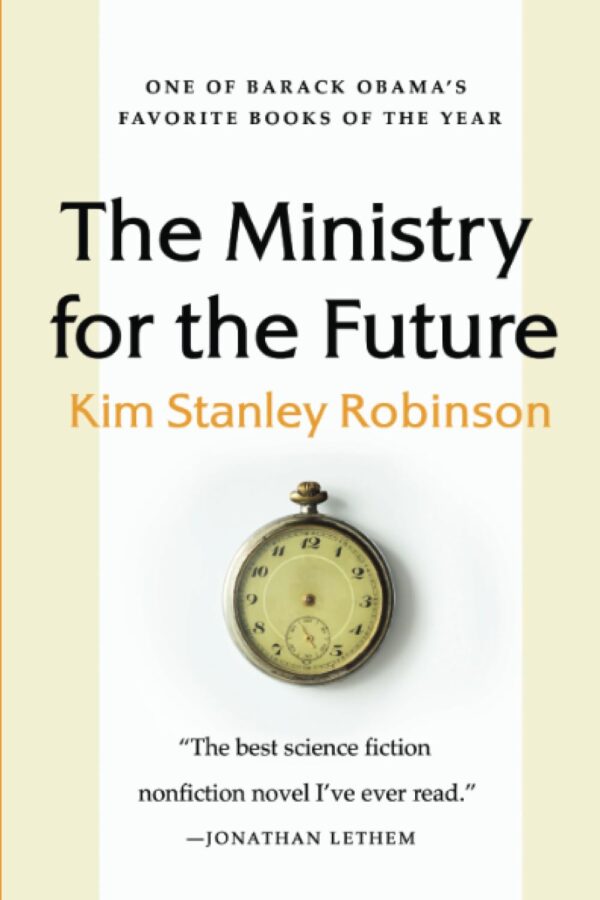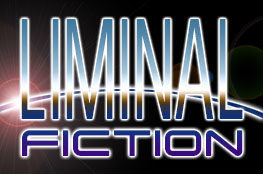
Genre: Sci-Fi, Cli-Fi, Near Future
Reviewer: Scott
Get It On Amazon
About The Book
The Ministry for the Future is a masterpiece of the imagination, using fictional eyewitness accounts to tell the story of how climate change will affect us all. Its setting is not a desolate, postapocalyptic world, but a future that is almost upon us.
Chosen by Barack Obama as one of his favorite books of the year, this extraordinary novel from visionary science fiction writer Kim Stanley Robinson will change the way you think about the climate crisis.
The Review
I’ve been meaning to read Kim Stanley Robinson’s Ministry for the Future ever since I heard about it a couple years ago, and finally managed to fit it into my reading schedule. I’m glad I did.
This is an epic tale, a beast of a book. It most closely reminds me of Whitley Streiber’s Nature’s End (1986) or Robinson’s own New York 2140. It’s told over 105 chapters, many of them only a few pages long, and even so it manages an impressive 576 pages.
The style is much like the one Robinson employed in New York 2041. A series of shifting viewpoints, told in a mix of first, second and third person, that give us a wide-ranging view at what the near future might look like. The author reserves the third person to the main characters in the story, Frank May, an American aid worker who has the misfortune to be in India during a deadly heat wave, and Mary Murphy, an Irish woman who heads up the titular Ministry, representing the unborn future generations in a world that’s rapidly veering into climate disaster.
Second person is used in the story to convey theoretical elements to the reader, while first person seems reserved for the many one-time points of view Robinson employs to give us a wide ranging view of a world in crisis.
The book runs on three main tracks. The first is a fairly traditional third-person story about two characters fighting to save the world, though in drastically different ways:
The book starts out on a brutal note, as the aforementioned heat wave hits India, and slowly cooks a huge chunk of the country as power sources fail and the heat grinds on and on. We see all of this through Frank’s eyes, as he tries to help those around him but only manages to succumb to the heat with the rest of them. This is one of the hardest things I’ve read in a long time, but necessary, I think, to ground the book in the seriousness of the threat we all face.
Frank survives, but is irrevocably changed by the incident, damaged to his core, and winds up traveling the world, searching for an antidote to his pain.
Mary has a better go of it, running a organization born out of the Paris Agreement. With a relatively small staff and budget, she must find ways to start to turn the rapid increase of carbon and methane in the atmosphere around, which will require both legal and black operations to effect change.
When they meet, their stories entwine, though ever easily, as Frank desperately urges Mary to do more to fight the climate change menace.
The second track is the sprinkling of personal vignettes throughout the book:
Robinson gives us cameos of regular joes all around the planet, showing us how the world is changing and how many f the changes play out on the ground. One of my favorite of these was a young woman in the navy, and her trenchant observations about income inequality.
These folks never have names, but in some cases, they do come around again later in the novel, as in the case of a woman who spends the better part of three decades in a refugee camp.
The final track is something akin to a Ted talk or a flash education in politics, economics, and climate change. Robinson fills the book with these mini-lectures. While they are clearly a case of info dumping, I’d argue they are necessary in an urgent book like this to give us as readers the tools we need to truly visualize the crisis that looms before us, that even now is causing irreparable harm across the globe, and which only promises to grow worse in the coming years and decades.
This is documentary-as-novel, a little too eal for comfort, but also a much-needed warning to wake up before it’s too late.
The end reminded me a bit of The Return of the King, where, after the action of the story is over, we get a hundred-page denouement which as maybe 95 pages too long. There, as here, the author lingers, perhaps reluctant to leave his world and Mary, his primary character, too soon.
And yet… even here, there’s an apparent purpose at work. This part of the book is our reward, our dessert, a beautiful imagining of what could be if we can just navigate the shoals ahead. It’s a shining almost-utopia – while there are still greedy people and many remaining problems, it once again seems possible that things might just come out okay.
One other small beef: no queer characters, at least not that I noticed. A little LGBTQ+ representation wouldn’t hurt, next time out.
In an aside, I would normally ding a futuristic book for using dated names like Mary and Frank, citing them as a lack of imagination on the author’s part. But given that many of the side characters had much more interesting (and less antique) names, I have to wonder if the names themselves serve as sort of a bridge form our past to this possible future. Almost a warm cozy blanket sort of thing to get us through.
This book should be required reading for… well, everyone, but especially for anyone in a position to implement changes that might help stave off the worst impacts of climate change. Many of the ideas in the book were new to me, and even when some were proven not to work, others were tried. In the end, it was a combination of many approaches – social change, economic leverage, geoengineering, and a hundred other little things that made the difference.
An important book, and one I will continue to think about long after I finished the last word. Highly recommended.
The Reviewer
Scott is the founder of Queer Sci Fi, and a fantasy and sci fi writer in his own right, with more than 30 published short stories, novellas and novels to his credit, including two trilogies.

